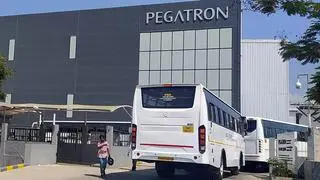When Cyclone Vardah hit Chennai, the city’s broadband network went down along with trees and power lines.
Almost all standalone broadband networks such as ACT Fibernet, Cherrinet, Raajnett and FiberINQ went down. Why did they go down, but not networks like Airtel or BSNL?
The prime reason is that while Airtel and BSNL have underground cabling, the cables of other standalone networks run overhead, strung to lamp posts and trees.
When the thousands of trees and lamp posts went down, they pulled down and mutilated the fibre networks of these companies.
And restoring the networks is not easy. Finding out the locations where the cables have been damaged is a mammoth task. The easier way out is to lay cables afresh. And that’s what most standalone broadband companies are doing. This includes small companies that have just started operations, for whom this is a heavy blow.
A top official of a company said there was nothing else they could do — the only way out was to lay fresh cables. “It is impossible to rectify when cables are cut or damaged in thousands of places. The only way is replace them with new cables,” he said.
Tough task Compare this with underground cabling. The laying of the underground cables is a tedious, time-consuming and labour intensive process. Care has to be taken not to damage or disturb the existing cables (like power or other telecom networks). The roll-out too takes time compared to overhead cabling, but difference is that it is not affected by most natural calamities.
Underground cables don’t get damaged easily by cyclones and floods. The only time they get damaged is during road cuts by other agencies and telecom operators.
One more drawback for companies using overhead cables is sabotage and theft. New entrants to an area or existing rivals usually resort to damaging cables of other operators. Underground cables are immune to these.
But the rollout of networks using underground cabling is not easy. The right of way (ROW) is more expensive and difficult to get and the cable-laying process itself consumes time and labour. But the operators using overhead cabling can roll out to new areas and buildings faster as no digging and laying of cables is required.
But with most of the existing telecom operators using underground cables using old copper cable technology (easier to lay and repair, but offer slower speeds), the new broadband companies straightaway started using fibre cables that enabled high-speed broadband at lower rates.
But that’s changing. Airtel and BSNL are switching to fibre. Airtel has come out with what it calls V-Fiber. V-Fiber combines fibre and vectorisation technology “that delivers super fast speed”, according to Airtel. With fibre cables and optimisation of exchanges, Airtel customers will no longer be constrained by the distance from local exchanges.
Though rectifying faults in underground cables is difficult (as it involves digging), it is not much of an issue as faults are few.
With Airtel and BSNL up and running in most areas after Cyclone Vardah, standalone broadband companies are just limping back to normal - as most of the cables have to be replaced anew. Smaller companies with less financial muscle are finding the going tough as cable replacement is not easy and expensive.
The standalone internet providers (using overhead fibre cables) say the government does not give ROW access for digging trenches. So, there is no way out for these companies but to go overhead. And keep hoping that nature will not be so harsh again.







Comments
Comments have to be in English, and in full sentences. They cannot be abusive or personal. Please abide by our community guidelines for posting your comments.
We have migrated to a new commenting platform. If you are already a registered user of TheHindu Businessline and logged in, you may continue to engage with our articles. If you do not have an account please register and login to post comments. Users can access their older comments by logging into their accounts on Vuukle.